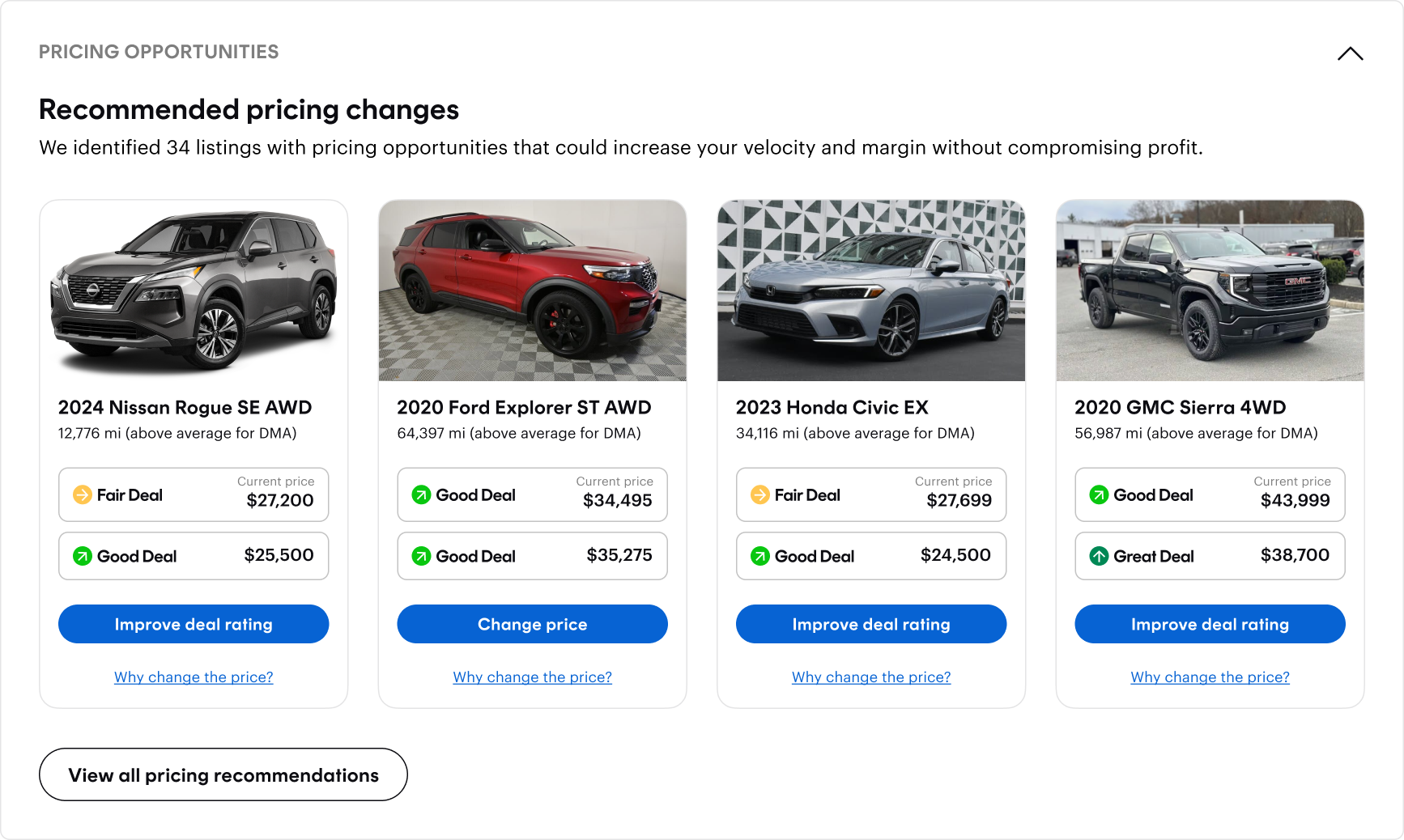designing for confidence
UX Leadership on the Dealer Pricing Tool
Over the past year, I’ve led UX design for a critical internal tool that helps automotive dealers price their inventory more effectively. Built for speed, clarity, and accountability, the Pricing Tool supports everyday pricing decisions with real-time metrics, smart recommendations, and intuitive interaction patterns. My role focused on translating complex data and workflows into a clean, understandable experience that gives users confidence at every step.
Driving Clarity in a Complex Workflow
Pricing decisions are high-stakes, often requiring speed, precision, and coordination across teams. To support this, I designed a simple but powerful UI that surfaces the most important metrics (Lead Potential, Turn Time, Market Days Supply) exactly when users need them. Each price adjustment updates these signals in real time, helping users make informed decisions without second-guessing.
Interaction Patterns That Build Trust
At the core of the experience is an interactive price slider that allows users to preview the impact of a change before committing. This small interaction detail carries a big usability impact: it replaces guesswork with tangible feedback. Alongside this, I introduced clear indicators showing whether a price change was user-initiated or system-applied, and whether it successfully syndicated to external platforms. These affordances make the system feel more transparent and ultimately, more trustworthy.
Designing for Speed and Findability
I focused heavily on search and filtering, knowing that dealers often manage hundreds of vehicles. I designed a type-ahead search that works across VINs, stock numbers, user names, and vehicle details. In parallel, I built a robust filter system for event types and user activity, so a pricing manager can quickly audit changes or isolate problem areas.
UX That Aligns With Dealer Needs
This tool wasn’t designed in isolation. I conducted hands-on reviews with real users to understand where existing tools fell short. Many wanted less noise, more clarity, and stronger feedback when things failed. I translated that into design decisions: reduced visual clutter, clearer labels, and consistent alert patterns for failed changes or unsyndicated pricing.
Outcome-Focused Design
Ultimately, this project was about helping users make better decisions faster. That meant aligning the design not only with dealer goals, but with team-wide clarity and accountability. Every feature was shaped by that standard, whether it was the precision of the slider, the placement of metrics, or the visibility of attribution.
What This Work Represents
This project exemplifies how I approach product design: with a focus on clarity, systems thinking, and deeply collaborative iteration. The Pricing Tool is now actively used by hundreds of dealers to guide real-world business decisions, and it continues to evolve based on user feedback and product direction.
By putting thoughtful UX at the center of a data-rich, high-impact tool, we’ve helped make pricing more transparent, more efficient, and more aligned with how dealers actually work.


